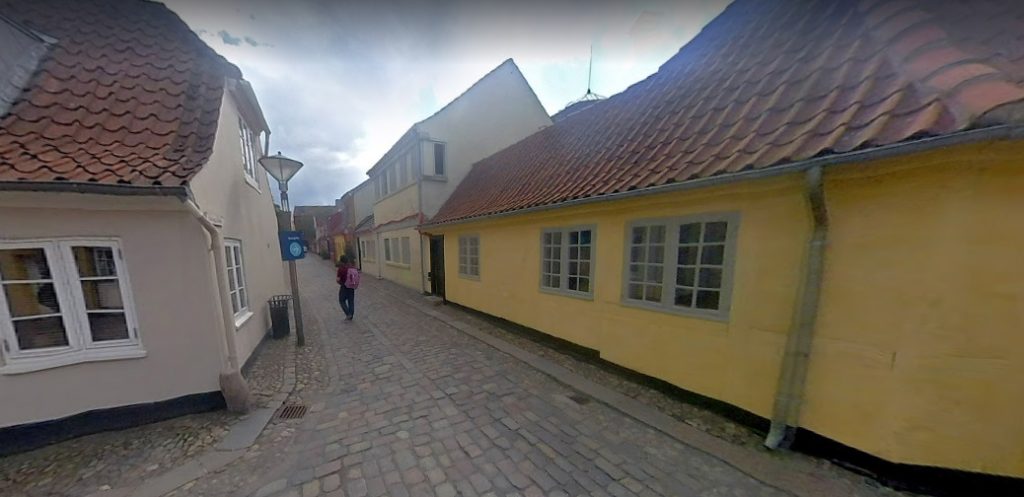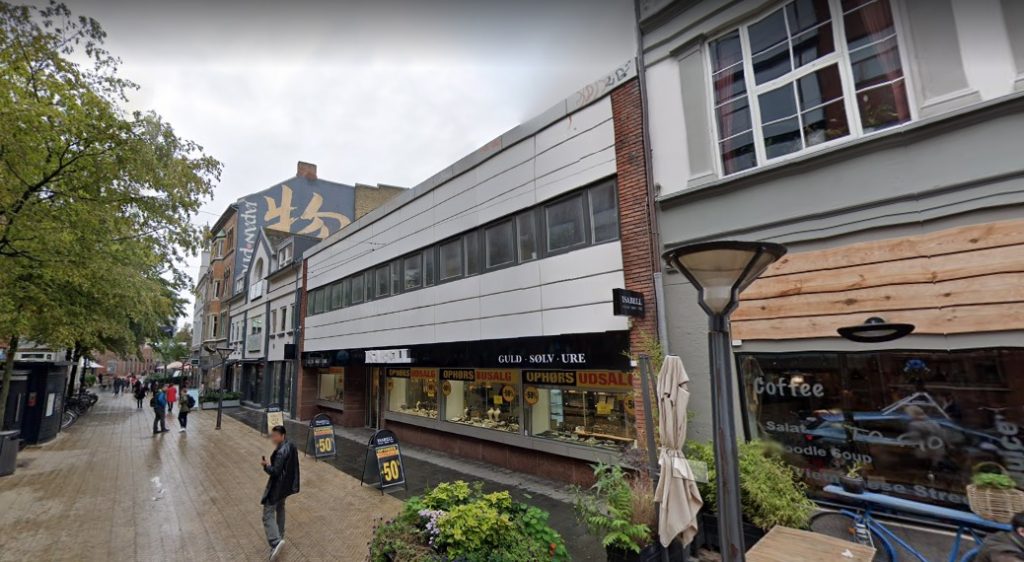Odense or Odin’s Sanctuary is the name of one of the oldest cities of the Danish kingdom, which is more than 1000 years old. The population of Odense with its suburbs is about 180 thousand people. However, the town itself is very small and compact, but absolutely fabulous.
Despite these characteristics, Odense is the third largest city, the capital of the island of Funen, located near the narrow, winding, steep shores of the bay of the same name of extraordinary beauty. In addition, the city is the largest shipbuilding center with a large shipyard OdenseSteelShipyard.

Odense is a large park area, where gingerbread houses, ancient churches and amazing landscapes stand at every step along the narrow cobbled streets, like illustrations to the fairy tales of Andersen, beloved by the Danes. And this is no wonder, because the famous storyteller hails from Odense. People’s love can be judged by the numerous sculptures of the characters of the writer’s fairy tales scattered throughout the city. There is also the Andersen Museum, and a park named after the writer.

But the city is famous not only for fairy tales. The local cathedral is the tomb of kings and the patron saint of the country, St. Knud. Every summer, crowds gather at local festivals. It is noteworthy, but the urban infrastructure – convenient, functional in all respects – does not interfere at all, rather, complements the fabulous atmosphere and magical appearance of the city.
In 1805, in Odense, in the poorest family of a shoemaker and a laundress, the future genius of fabulous craftsmanship, G.H. Andersen, was born. I must say that fate favored him. Surrounded from a young age by fans and patronized by patrons, Andersen became a star by the age of 24. The writer was loved not only by the public, but also by monarchs and famous writers. The great storyteller lived to old age in glory and honor and died at the age of 70. In Odense, on the square near the city hall, you can see a sculpture of a writer sitting thoughtfully. Several more images of the writer are scattered around the city.
How to get to Odense
Funen Island is located 160 km west of the capital. Odense Station is located on the Copenhagen- Jutland railway line. From Copenhagen, directly from the airport, you can get to Odense by train in an hour and a half. The cost of a trip by rail is 288 CZK. There are cheaper orange tickets. Orange tickets cannot be exchanged, handed over, or rerouted, they are valid for specific orange-colored trains. When booking a train ticket, a printout of it is required, to verify the data, they may ask for the credit card with which the ticket was paid. You can get to Odense from Aarhus in 1h 45 minutes and 190 kroner and Aalborg in 3 hours and 291 Danish kroner.

There is also another land route passing through a unique seven-kilometer suspension bridge across the Great Belt Strait. The bridge connects two islands – Funen and Zealand. Movement on the bridge is possible by bus or car. Prices for car rental in Denmark: the average price in the last 7 days https://travelocars.com/en/denmark/ The bus stop is located near the train station, at Dannebrogsgade 6 (Dannebrogsgade). The toll for a car to cross the bridge is 200 CZK.
The distances between many of the city’s attractions are small, so you can safely travel by bike or on foot. There are several bicycle rental offices in the central part of Odense: CityCykler at Vesterbro, 27 or Per’sCykler&Knallerter at Vesterbro, 95. The price range is from 50 to 100 kronor per rental day. You can order a bike tour with an attractive price from 40 crowns.
Buses can be used for long-distance trips. The main bus stop is located in front of St. Knud’s Church. Most of the routes gather here. There is a bus station next to the railway station, through which all local buses pass, with the exception of No. 71.
Remember that passengers board through the front doors. The ticket price is 17 CZK, paid directly to the driver.
The movement by car around the city is quite free. But you will not need a car to explore many attractions, since they are located in a pedestrian zone. Parking lots along central streets fill up quickly. Therefore, you should look for large parking lots near the BrandtsKlædefabrik, CarlNielsenMuseet train station. The cost of parking is 13 CZK.

What to see, where to go in Odense
The most striking sights of the city are connected either with the history of the city or with the name of the famous Andersen:
The central square of the city is a separate attraction in itself, where the town hall, the cathedral and monuments to historically significant characters: Andersen and St. Knud are located.
The following historical sights are of interest: the Church of St. Hans at the palace, which is occupied by the city council, Odin Tower, once one of the tallest towers destroyed by the Nazis during the war, the Gothic church of St. Alban.
A unique open-air museum is the Funen Village, another must-visit place where you can get acquainted with the customs and life of farmers and peasants who lived in the XVIII—XIX centuries.
It is worth following the writer’s footsteps: the Andersen Park, the house-museum on Munkemmelestrede 3, where the dreamer of the XIX century was born, the school and, of course, the main museum of the writer. See the sculptures scattered along the picturesque old streets.
Little Odense has a huge zoo with a large variety of species of animals. There are penguins, giraffes, and lemurs here. Adults and children can not only watch funny animals, but also feed them.
30 km from Odense there is another medieval Danish castle – Egeskov, located in the middle of a lake with an unusual landscape and interesting exhibits.
It is worth visiting the free show “20 fairy tales in 20 minutes” or the short film festival, which takes place in August.
